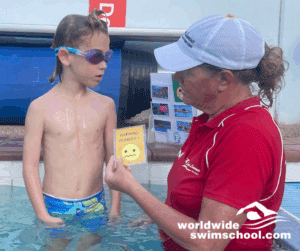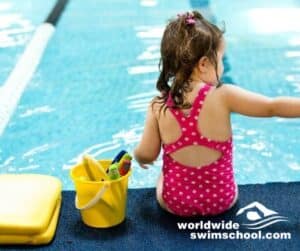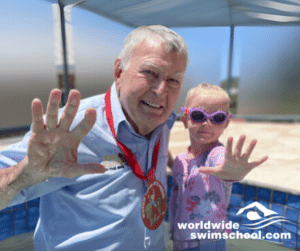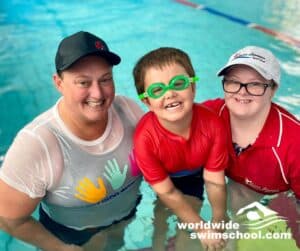We recently did a staff training session with the teachers at Laurie Lawrence Swim School about how to create variety in the swimming lesson. This came as a result from feedback we sometimes get at the front desk about children becoming bored with their swimming lessons. The educator in me is slightly defensive because I know that children thrive on routine and swimming is a very complex skill that requires repetition if we are going to create a quality swimming stroke.
By bringing this topic to the forefront I didn’t want to see my teachers lose focus on skill building where we progress only to the next stage when the child has competently mastered the prerequisite skill. But there was really no need to be defensive because when we brainstormed this topic I realised that there are plenty of ways to ensure that there is variety in the swimming lesson without comprising on our skill-building values. This is what we discussed.
Swim Lesson Planning
Swim lesson planning is vital to develop learning goals for the group and for variety in the swimming lesson. Remember to review and reflect your lesson plan ideas to ensure that you’re on track, because alternations may be necessary depending on the ability of the children or the class dynamics.
You don’t need to be overly specific in your lesson planning but it’s important that you know what your lesson focus is from week to week. If you don’t have it written down it’s very difficult to remember what skills you worked on the previous week, especially when you teach several shifts. If you don’t have a plan it’s very easy to revert to the same old boring lesson plan and students will become bored.
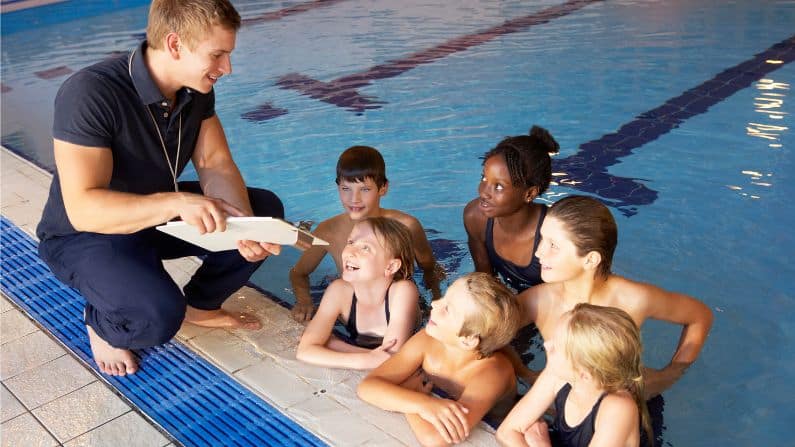
Location, Pool Space and Formations
It may be an idea to vary the location of your lesson. For example, move from shallow to deep water or vary the distances that the children swim. It’s important that children learn how to perform their swimming skills in deep water particularly when they have only been learning in the shallow water.
Furthermore, short distance swims are ideal to develop good skill execution but the children and parents will also delight in trying to swim longer distances. Remember to always rope off your teaching space to ensure the safety of your class and help with class control.
Don’t forget the different types of swimming formations to keep it interesting as well. Circling the land, wave formation, relay or circuits all give variety to the lesson.
Swimming Equipment
Try to select different swimming equipment to keep it interesting like pool noodles, kickboards, pull buoys, dive rings, floating mats and hoops just to name a few. Remember any equipment used should aid in the children’s learning. Don’t use equipment to waste time but use it to meet your lesson focus.
For example if your focus is to develop kicking skills, get the group to kick on a noodle, follow the lead kicking with the board, have short relay races kicking with the board, refocus kicking on the ledge, do a long lap kicking and walk back and practice kicking with a board roll on your back. There is a lot of variety here to keep the class interested. Maybe even a little bit too much to fit into one half hour lesson!
Warm Up and Final Activity
Traditionally we like to start all our classes off with breath control and kicking on a shallow ledge or side of the pool for 3 to 5 minutes.
I still believe this is the ideal way to start the class because it acclimatises the children to the water and also gives any latecomers an opportunity to join the group with minimal distraction. It is important however that we use this warm up to set the stage for the rest of the lesson.
For this reason, use the time to move through the group greeting the swimmers, correcting, manipulating and praising great work. Excite and engage the children by having them count with you for the count of ten as they kick. Make little competitions, for example, all the boys kick and then all the girls kick. Smile and let them know how excited you are for the upcoming lesson.
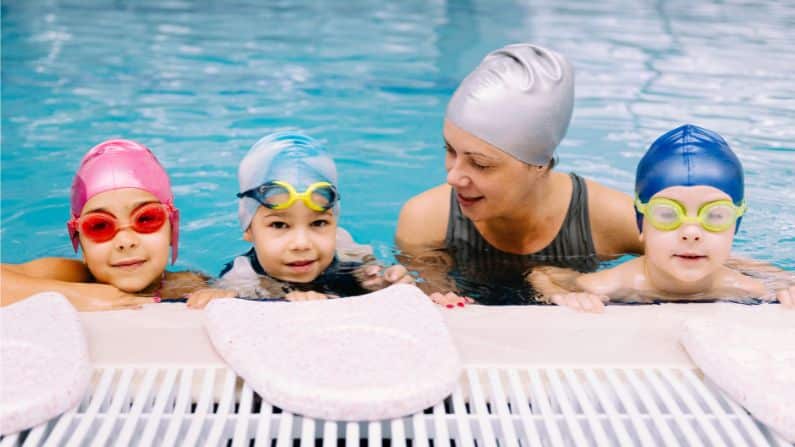
Finishing on a Positive Note
Make sure every class finishes on a positive note. This will excite the children for the following week and leave them feeling good about the lesson they just completed. Make sure to manage your time so that you can finish with something fun.
Children love diving for rings but this activity takes a fair bit of time. Very often the teachers are leaving this until the last minute or two and this makes the class run over or students miss out on a turn. Calling mum or Dad over to watch the last race of the class can get everyone excited and feeling good.
Remember don’t try to put too much into one lesson. Children do need to be given time to perfect the skill. But do read the children’s body language to see when you need to change activities. If you notice that they are starting to get fatigued or if behavioural problems start to arise it’s usually a good time to switch it up.
Get more teaching tips in our Swim Library and Swim Professional Development Academy.
Don't want to miss out on our latest offers, join our community to keep in touch.


